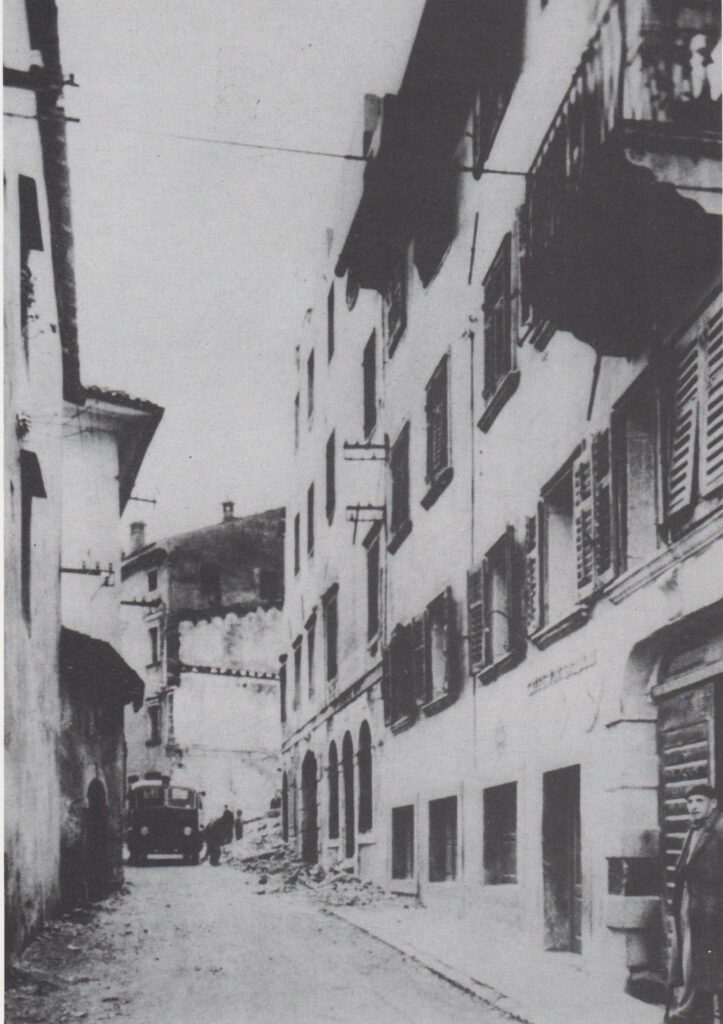Learn More

A sporadic Jewish presence emerged in Gorizia over the fourteenth century, in the present-day Piazza Cavour (previously Piazza Inferiore). The first established presence was towards the end of the fifteenth century in Contrada Cocevia, when the Christian bankers from Tuscany were kicked out of Gorizia for demanding extortionate interest on taxes.
When in 1509 the County of Gorizia and Gradisca passed to the Habsburgs, Emperor Maximilian I granted several rights to the Gorizian Jews, such as the right to reside and to conduct their own activities in the area in which they could establish themselves, thanks to the conduct agreements. Throughout the sixteenth century, they were also permitted to open several lending banks. Due to the imperial privileges, the Gorizian Jewish Community grew over the seventeenth century. Some people were granted the right to own real estate, while others were given the title Hofjuden, including Giuseppe Pincherle in 1624.
Like in Trieste, here the Emperor Leopold created a ghetto in 1698. To begin with, this could be found in Contrada Cocevia; later the area of the San Giovanni quarter (present day Via Ascoli) was chosen, and the ghetto was delimited by the San Giovanni Church and the Corno stream, near the plague cemetery. The Ghetto had two doors and was formed of sixteen houses, which were owned or rented by the Jews of the city. The windows facing outwards were bricked up. Religious functions were performed in an oratory, which opened in 1699.
Here the Community suffered greater restrictions than in Trieste, though they were not always followed strictly: they had to wear a distinctive sign; they had to pay a tax to wear precious items and to engage Christians workers; they could not buy goods from outside the ghetto; they had to close their shops and could not leave the ghetto during Catholic festivals; during Lent they were obliged to participate in Church functions at least twice.
In Gorizia Jews carried out various roles: silk spinners, pawnbrokers, sellers of “strazzaria” and “ferravezza” (second-hand clothes and objects, traders – especially the Morpurgos).
In 1775 a Jewish state school was created in the ghetto, where they were allowed to close on a Saturday. The school was for children aged six to thirteen years. By the 1890s, the Jewish Community no longer had any illiterate members under the age of six. The school was closed in the 1800s due to the scarcity of attendees.
In 1777 the return to Venice forced many Jews to leave the areas under Venetian control. Some families from Venice and Friuli Veneto moved to Gorizia, while others relocated to Gradisca and Trieste.
In 1940, Via Ascoli was renamed “Via Tunisi”, though it returned to its original name in 1951.
SOURCES:
Orietta Altieri, La comunità ebraica di Gorizia: caratteristiche demografiche, economiche e sociali (1778-1900), Del Bianco, Udine 1985
Giuseppe Bolaffio, Sfogliando l’archivio della Comunità di Gorizia, in “La Rassegna Mensile Di Israel”, vol. 23, no. 12, 1957
Chiara Lesizza Budin, Vita e cultura ebraica nella Gorizia del Settecento, Edizioni della Laguna, Mariano del Friuli 1995
Adonella Cedarmas, La Comunità israelitica di Gorizia. 1900-1945, Istituto Friulano per la Storia del Movimento di Liberazione, Udine 1999
Miriam Davide and Pietro Ioly Zorattini (eds), Gli ebrei nella storia del Friuli Venezia Giulia. Una vicenda di lunga durata, Giuntina, Florence 2016
Marcello Morpurgo, Valdirose. Memorie della Comunità ebraica di Gorizia, Del Bianco, Udine 1986
Translation from Italian to English by Bethany Gaunt
Project by
Jewish Community of Trieste and Ca’ Foscari University Venezia
Info
visit@triestebraica.it
